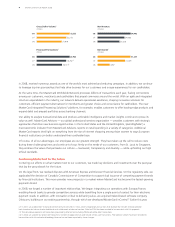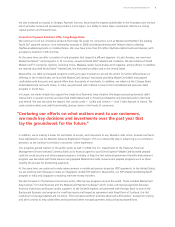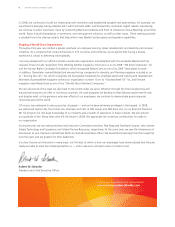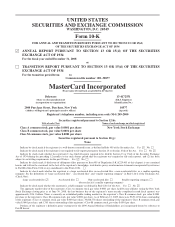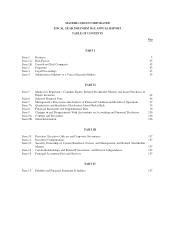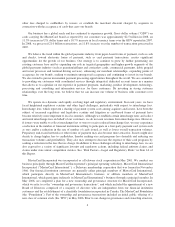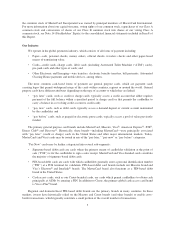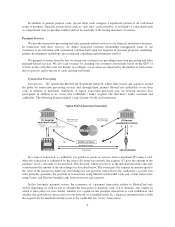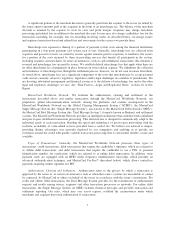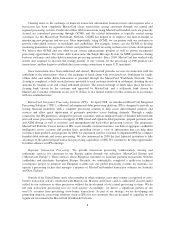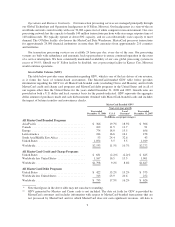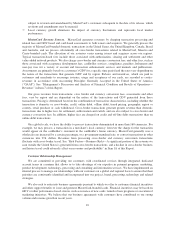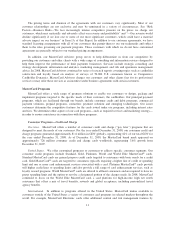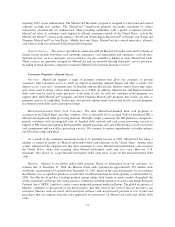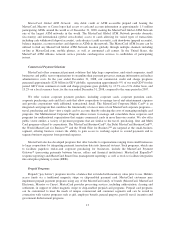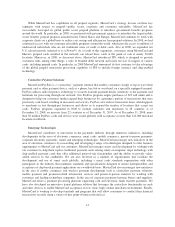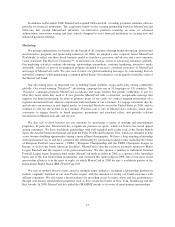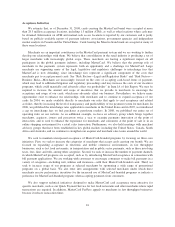MasterCard 2008 Annual Report Download - page 16
Download and view the complete annual report
Please find page 16 of the 2008 MasterCard annual report below. You can navigate through the pages in the report by either clicking on the pages listed below, or by using the keyword search tool below to find specific information within the annual report.
In addition to general purpose cards, private label cards comprise a significant portion of all card-based
forms of payment. Typically, private label cards are “pay later” cards issued by, or on behalf of, a merchant (such
as a department store or gasoline retailer) and can be used only at the issuing merchant’s locations.
Payment Services
We provide transaction processing and other payment-related services to our financial institution customers.
In connection with these services, we deploy dedicated customer relationship management teams to our
customers to provide them with customized solutions built upon our expertise in payment programs, marketing,
product development, technology, processing and consulting and information services.
We generate revenues from the fees we charge our customers for providing transaction processing and other
payment-related services. We also earn revenues by charging our customers assessments based on the GDV of
activity on the cards that carry our brands. Accordingly, our revenues are impacted by the number of transactions
that we process and by the use of cards carrying our brands.
Transaction Processing
Introduction. We operate the MasterCard Worldwide Network, which links issuers and acquirers around
the globe for transaction processing services and, through them, permits MasterCard cardholders to use their
cards at millions of merchants worldwide. A typical transaction processed over our network involves four
participants in addition to us: issuer (the cardholder’s bank), acquirer (the merchant’s bank), merchant and
cardholder. The following diagram depicts a typical point-of-sale card transaction.
In a typical transaction, a cardholder (A) purchases goods or services from a merchant (B) using a card.
After the transaction is authorized by the issuer (D) using our network, the acquirer (C) pays the amount of the
purchase, net of a discount, to the merchant. This discount, which we refer to as the merchant discount, takes into
consideration the amount of the interchange fee described below. The issuer pays the acquirer an amount equal to
the value of the transaction minus any interchange fee and posts the transaction to the cardholder’s account. Our
rules generally guarantee the payment of transactions using MasterCard-branded cards and certain transactions
using Cirrus- and Maestro-branded cards between issuers and acquirers.
In this four-party payment system, the economics of a payment transaction relative to MasterCard vary
widely depending on such factors as whether the transaction is domestic (and, if it is domestic, the country in
which it takes place) or cross-border, whether it is a point-of-sale purchase transaction or cash withdrawal, and
whether the transaction is processed over our network or is handled solely by a financial institution that is both
the acquirer for the merchant and the issuer to the cardholder (an “on-us” transaction).
6


